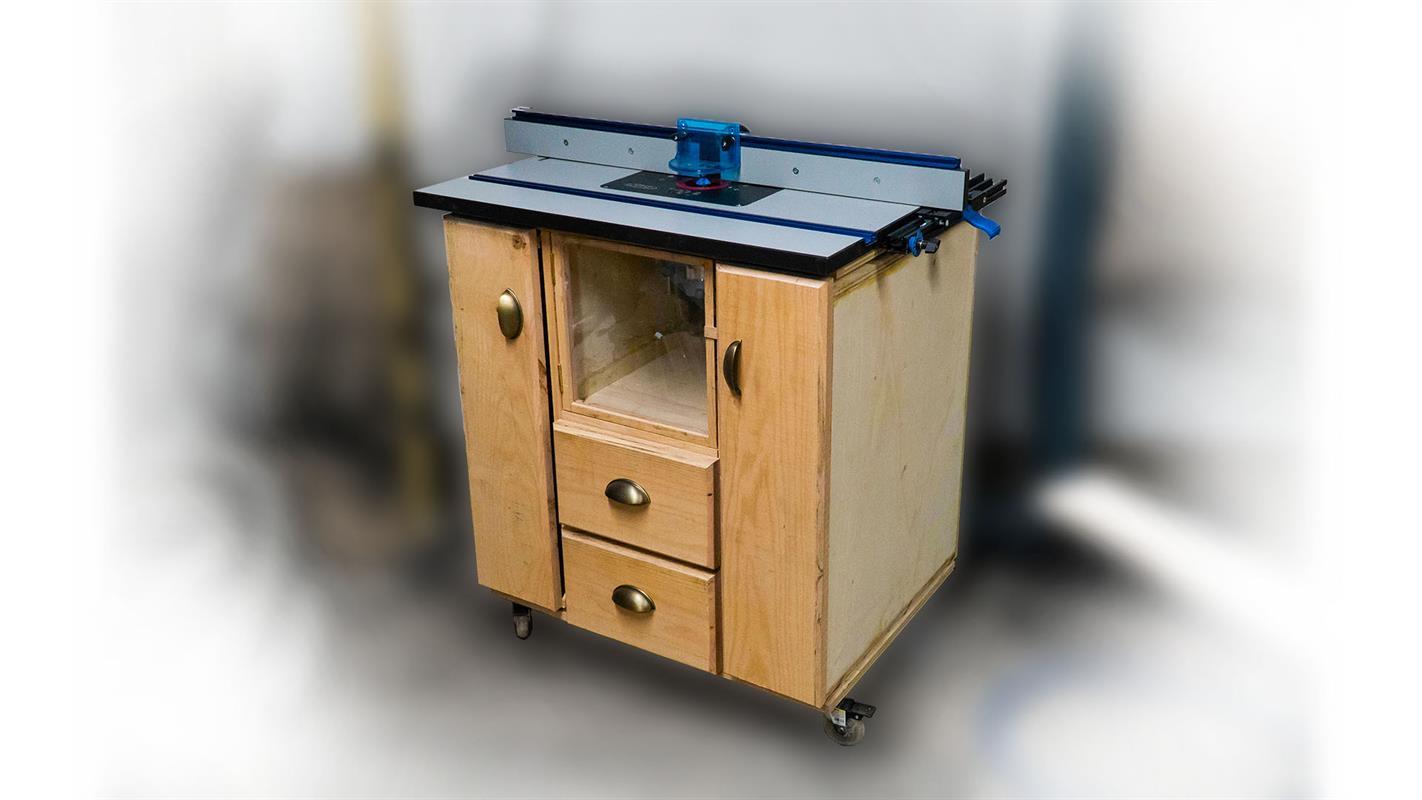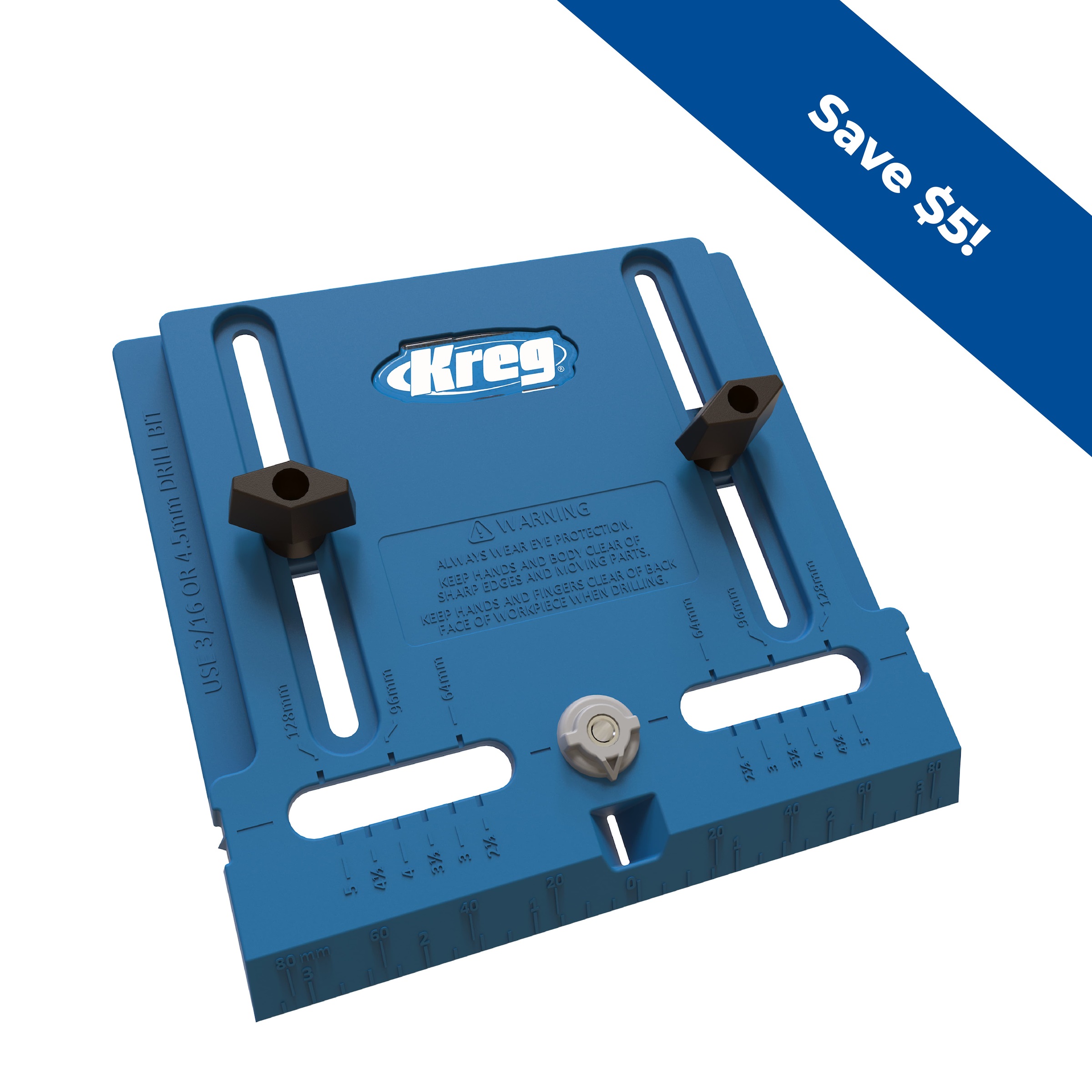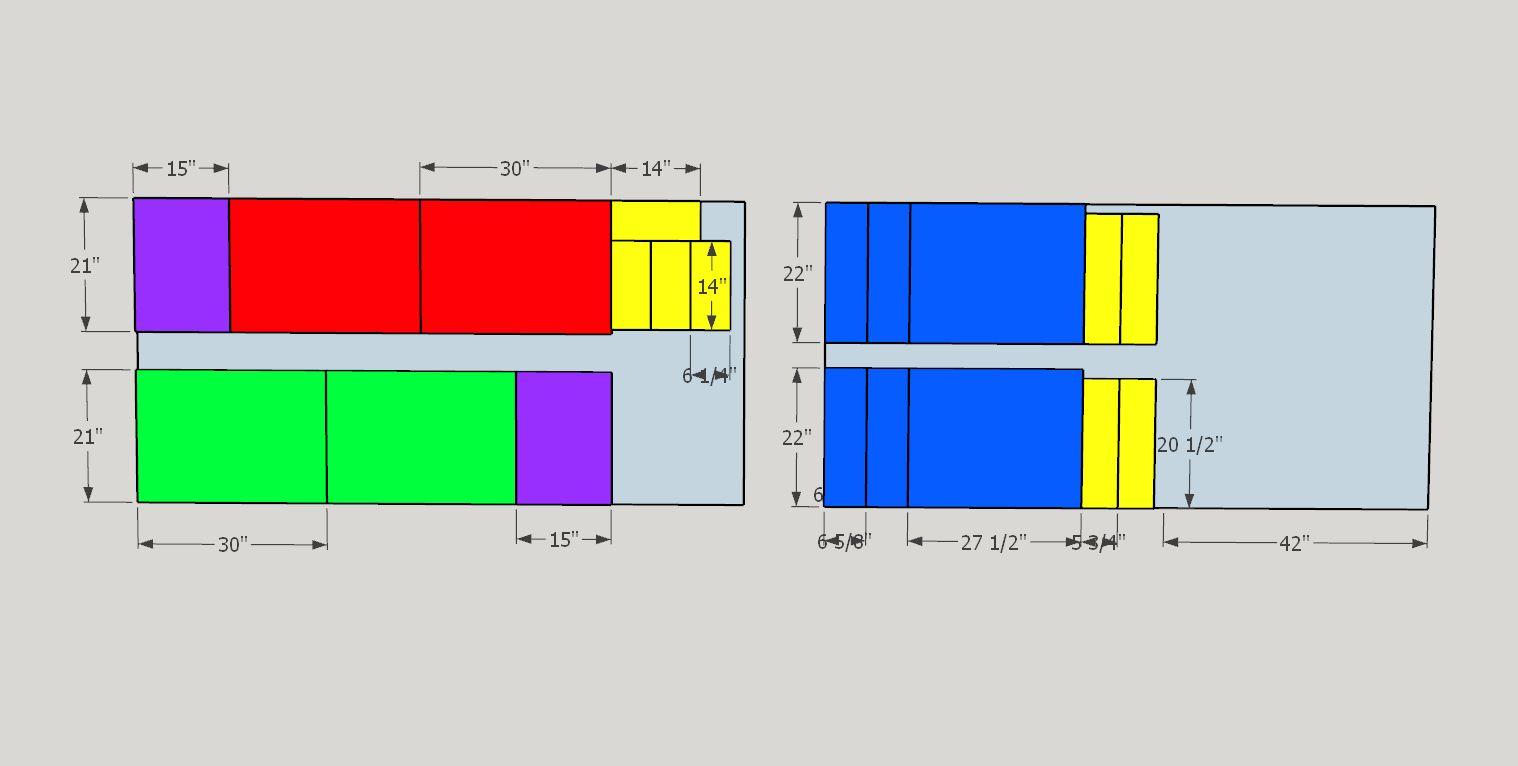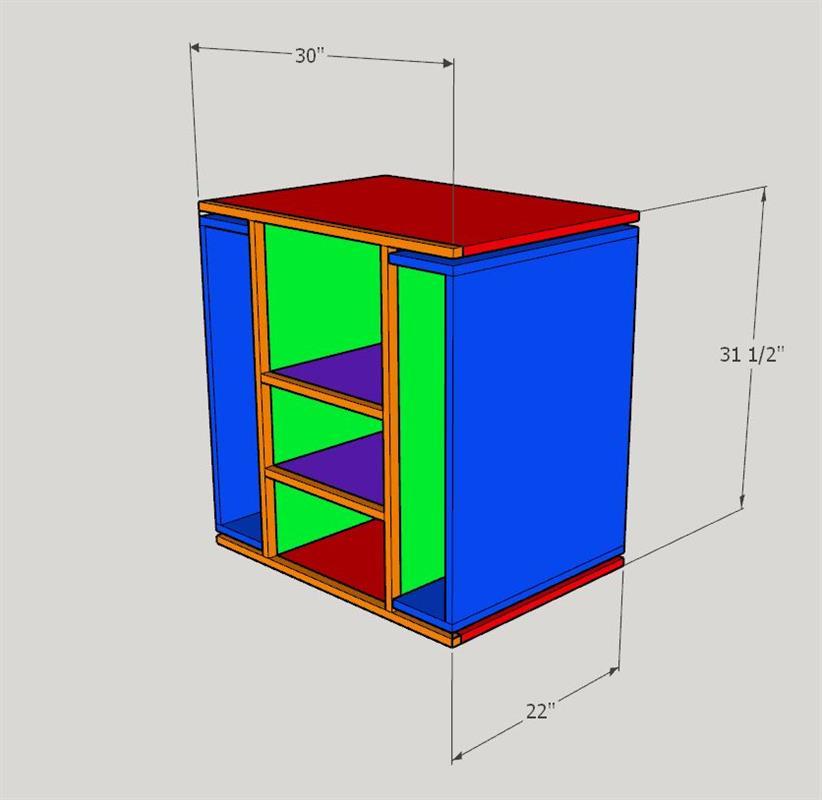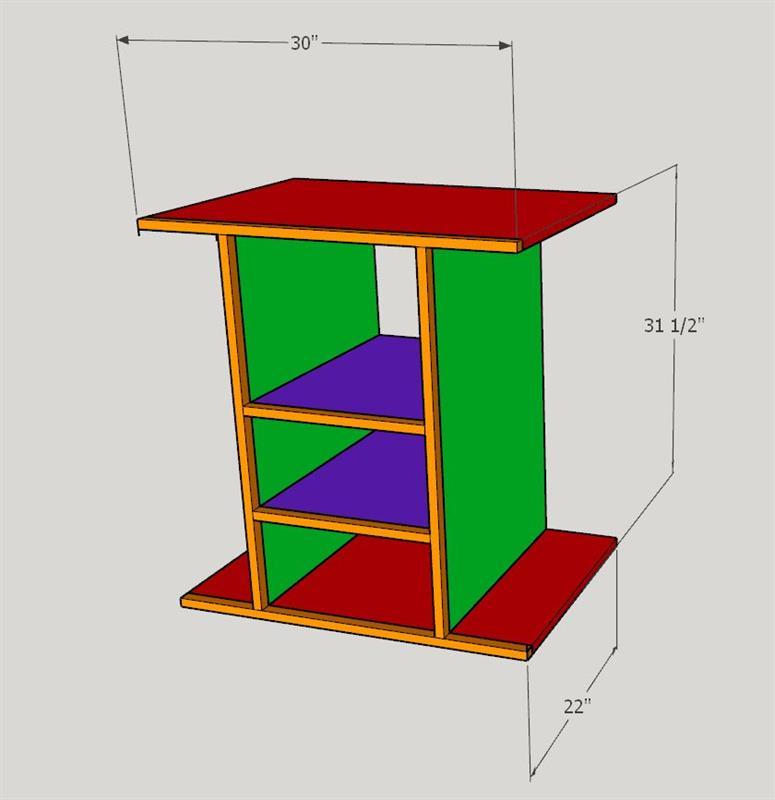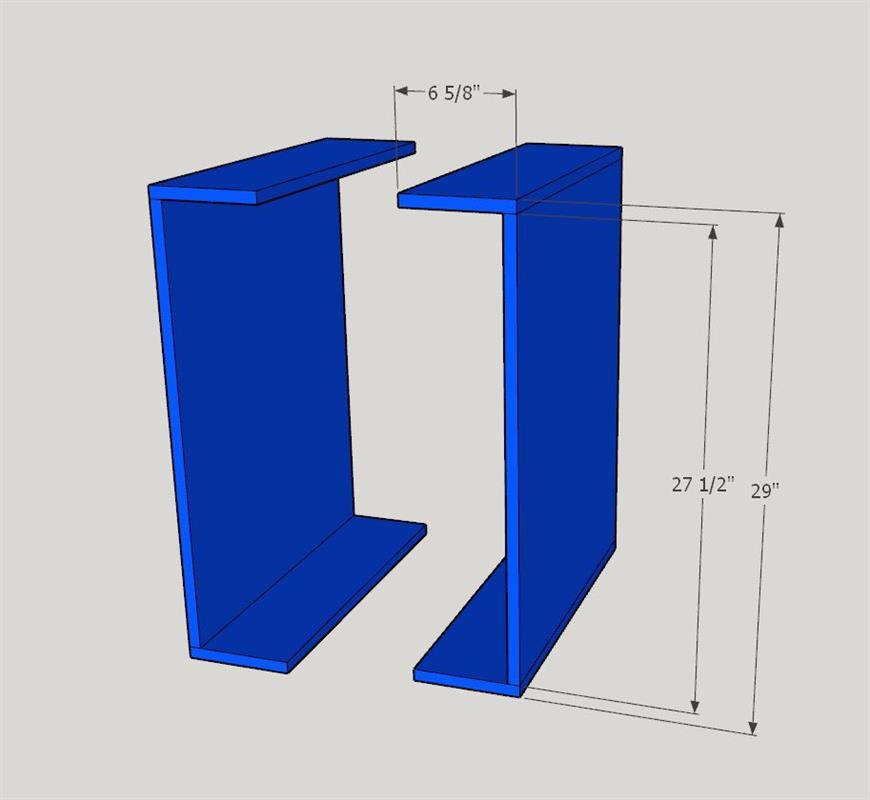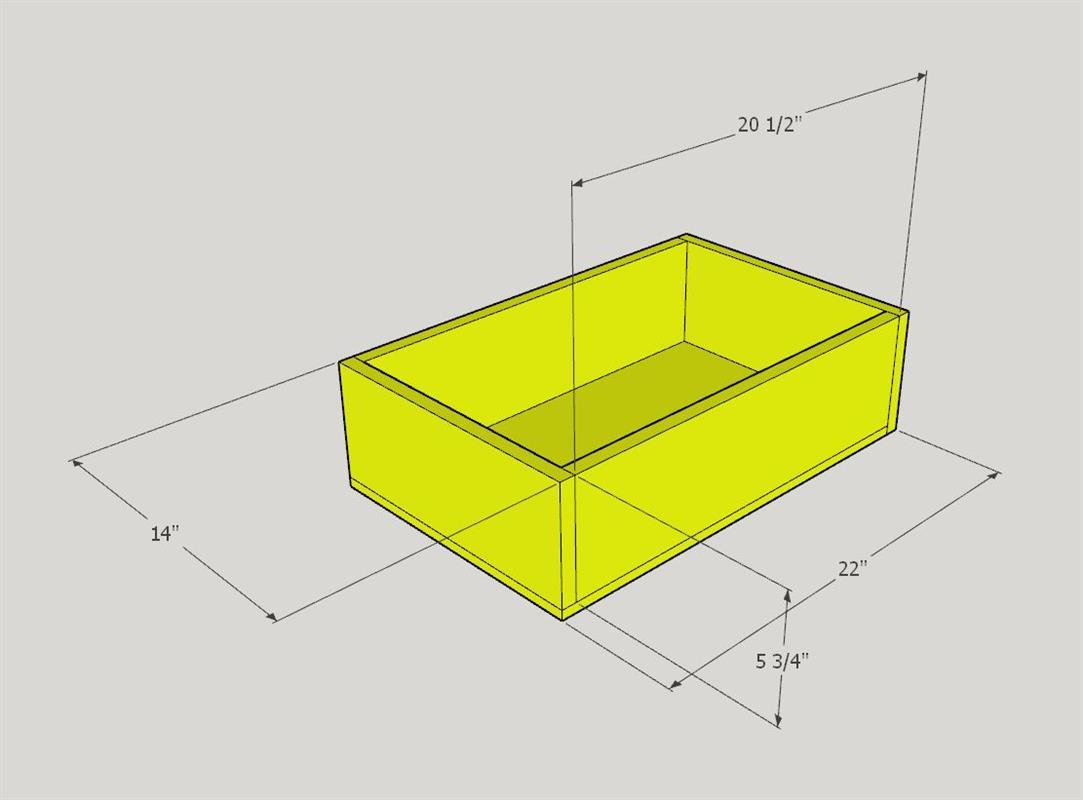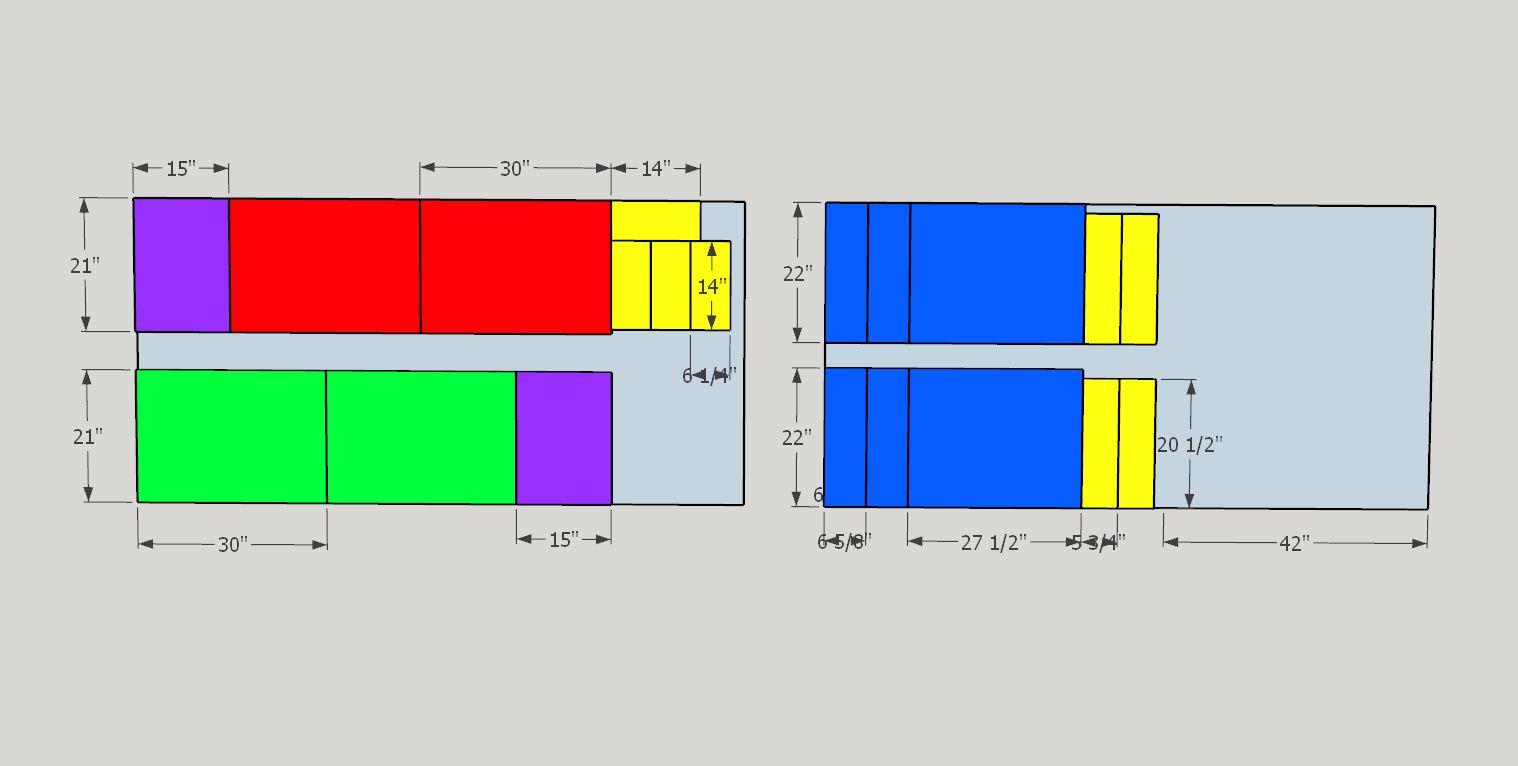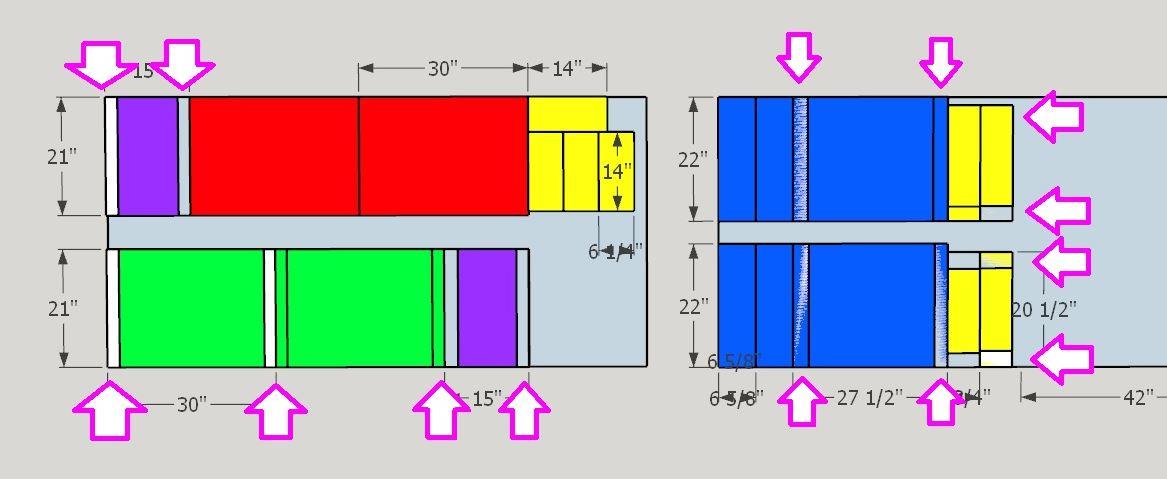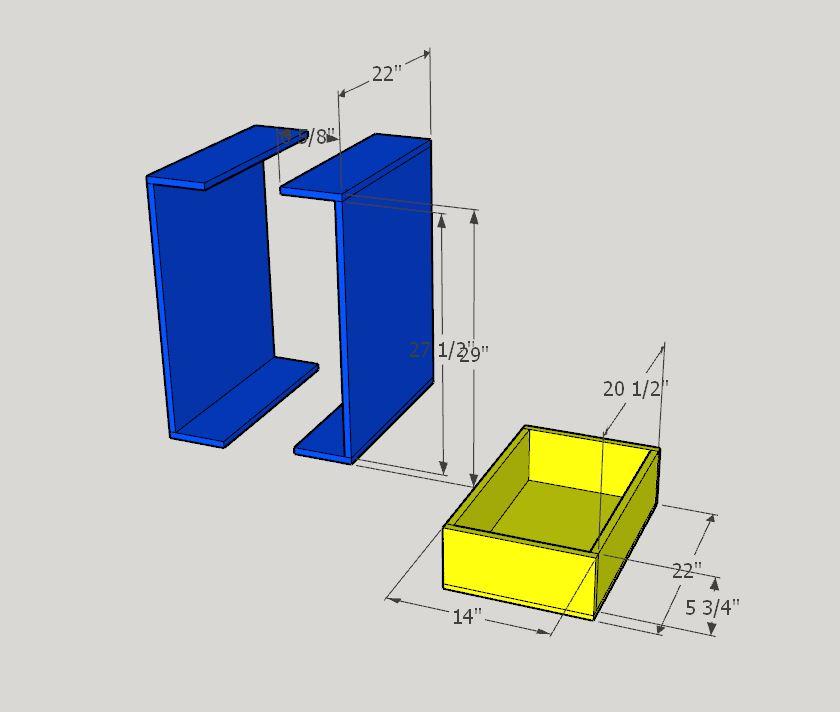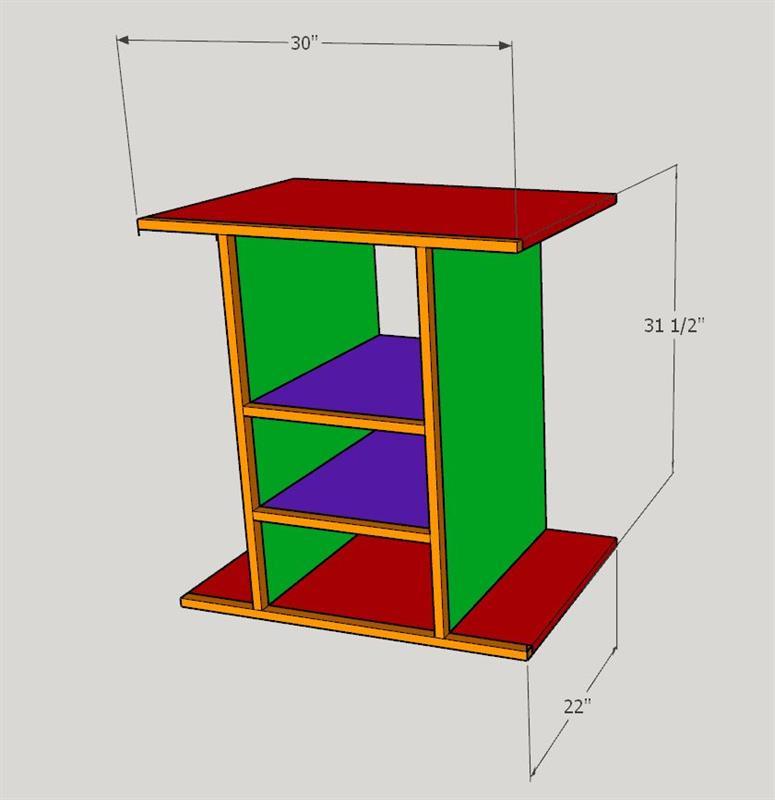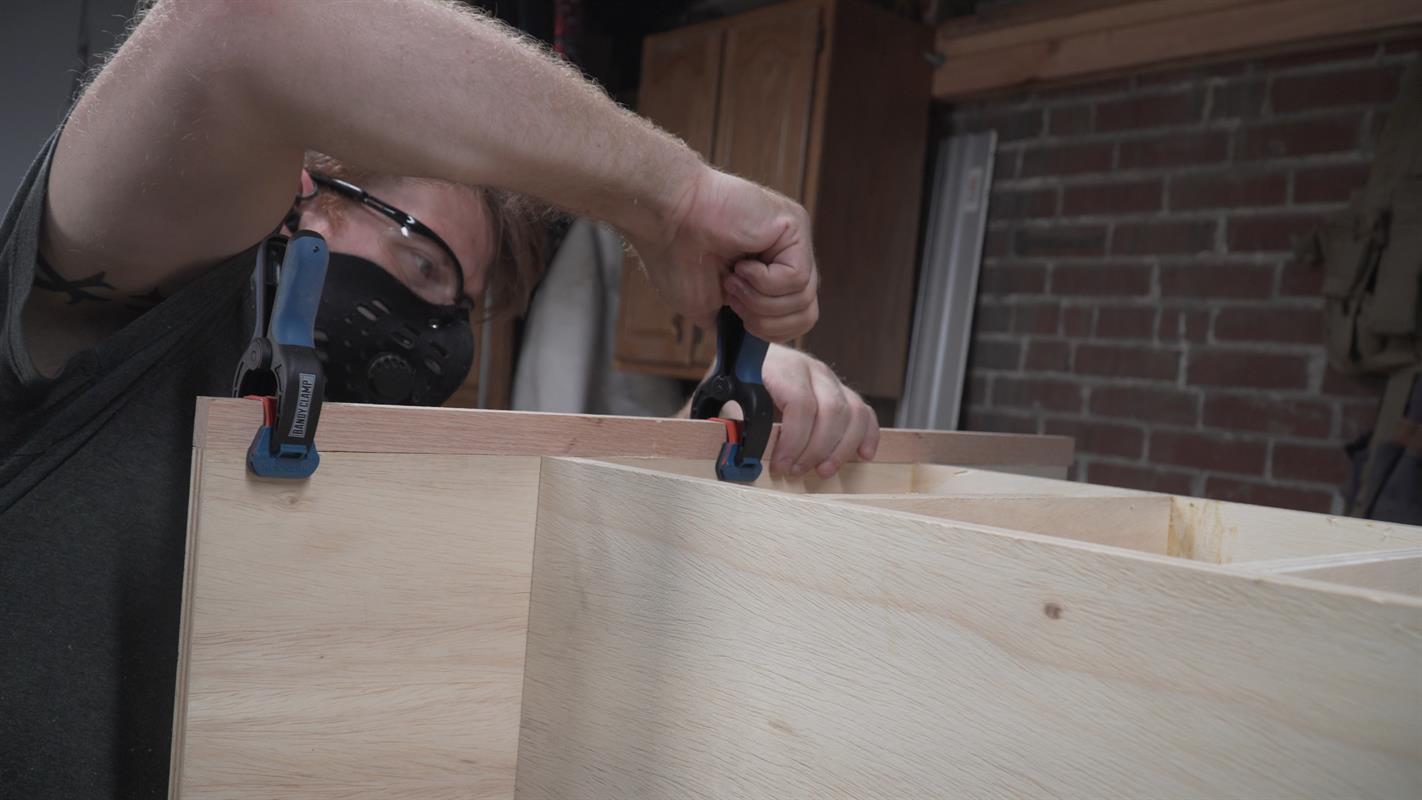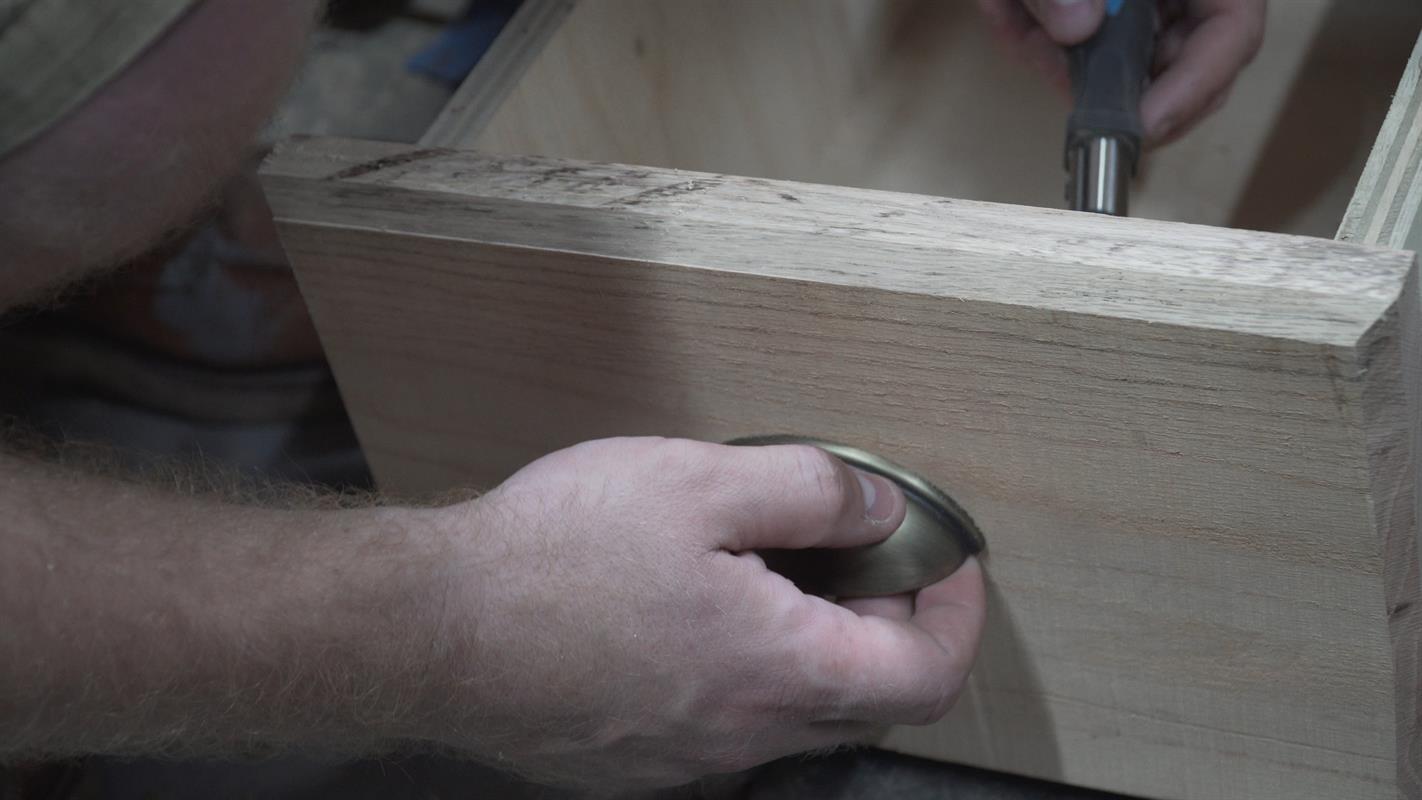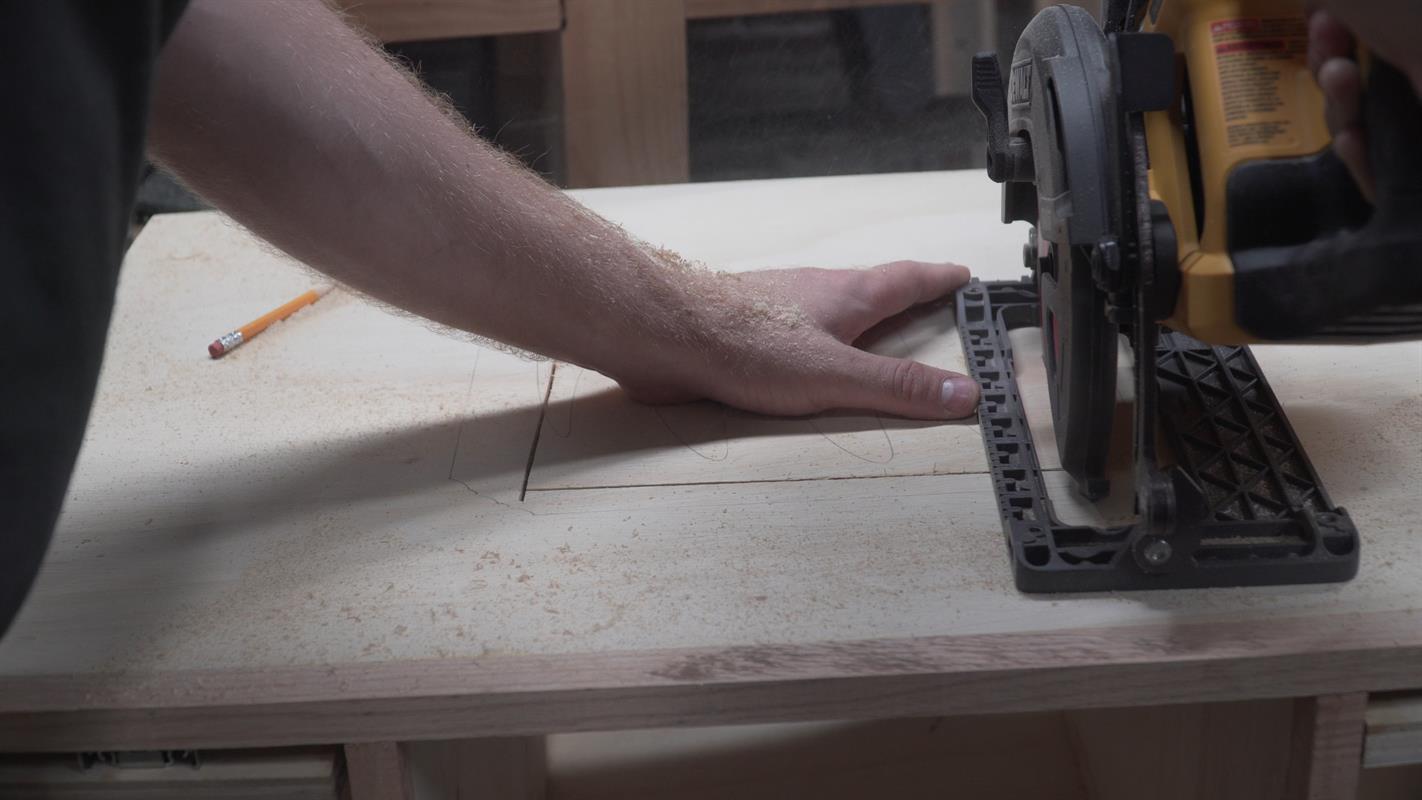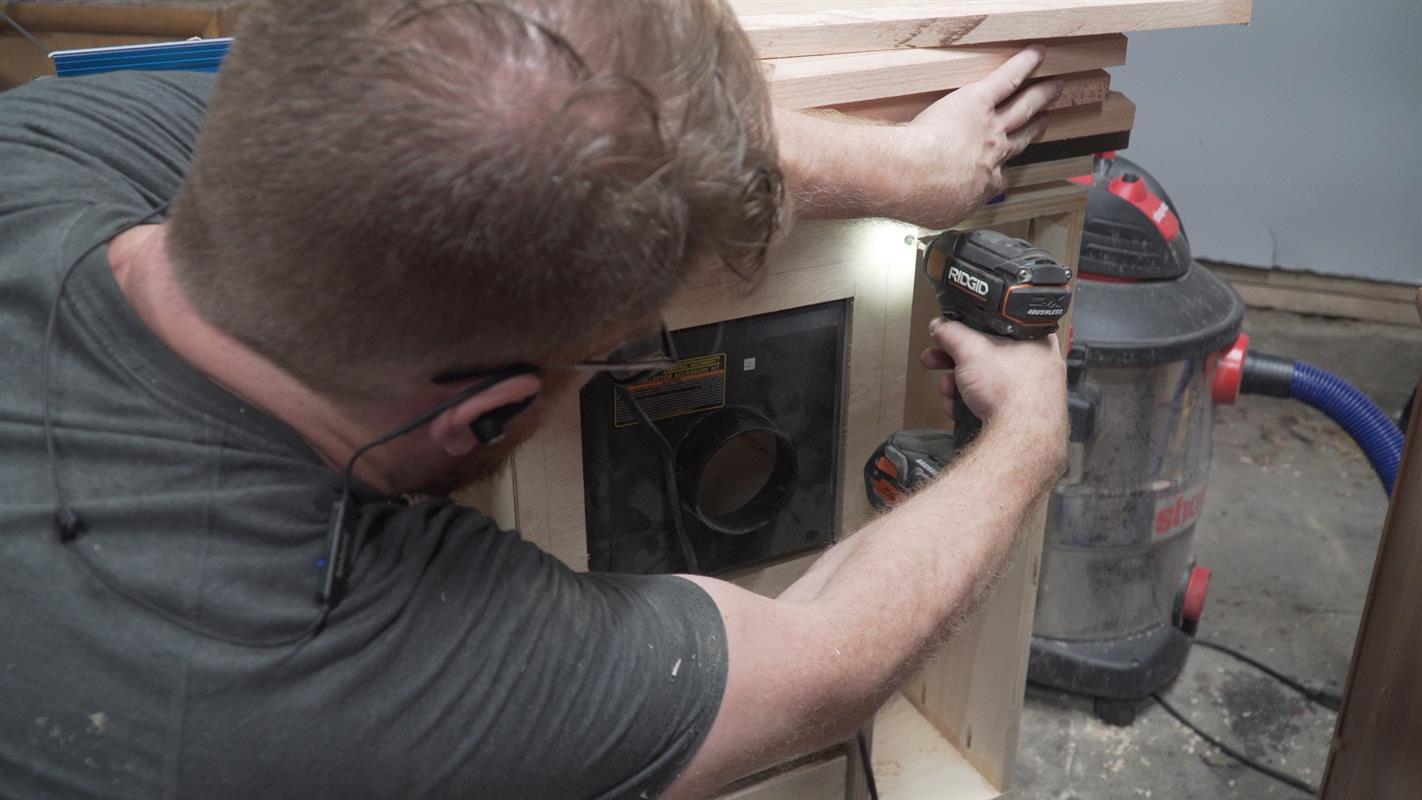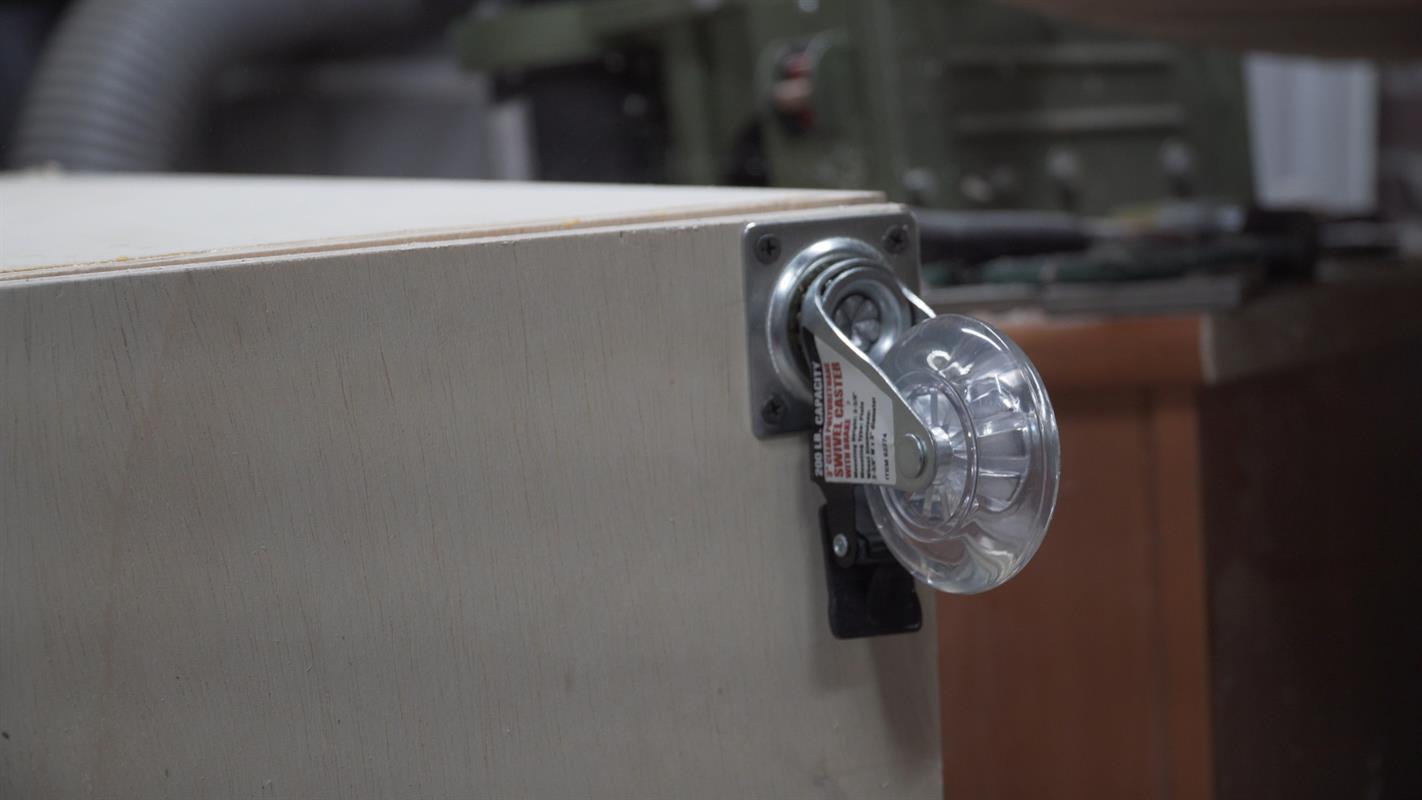Router Table w/ Tons of Storage – WoodWorkLIFE
By WoodWorkLIFEThis feature rich router table featuring vertical sliding drawers, the Kreg Precision router system, & tons of storage. The build uses two sheets of Plywood and a busy weekend. Do you need a safe place to use your router, with good dust collection, and TONS of storage? This project is for you!
Directions
-
Batch out your cuts.
This project uses about one and a half sheets of 3/4" plywood, make sure you use a good quality plywood for rigidity and flatness (typically the more plys the better.) I used 2 4x8 sheets of 3/4" and 1 4x8 sheet of 1/2" Sande plywood from Home Depot, (This is around $44 a sheet and my go to for shop furniture.) I had the nice folks at THD do some of the breakdown for me to make the sheets easier to manage (I had them rip one sheet of 3/4" and one 1/2" sheet in half and cross cut the other 3/4" sheet at 42" then rip the other 54" piece in half.) The rest of the batch cuts can be seen on the batch cut diagrams below. I tried to optimize the placement to minimize waste, and maximize the utility of off-cuts. Plywood is expensive.
-
Pocket Hole it up!
Using your Kreg pocket hole jig, drill holes in all of the mating surfaces. I tried to keep the pocket holes on the inside faces (inside the cabinet) to ensure that they were out of site & out of mind. You could of course plug them but since this is shop furniture, I wasn't terribly concerned about it.
A couple of important notes on pocket hole placement
For the sliding vertical drawers (blue) drill the pocket holes on the short side of the 27 1/2" long piece.
On the standard drawers (yellow) drill the pocket holes on the short sides of the 20 1/2" pieces
For the vertical partitions (green) drill the pocket holes on short side to eventually connect to the top and bottom of the router table.
(Pocket hole locations noted below) -
Assemble the Drawers
There are 4 total drawers in this router table (Blue Parts & Yellow Parts from cut list), I wanted it to have a ton of storage. There are two vertical drawers (I call them Jackman drawers) and 2 standard drawers. Assemble the drawers using glue and 1 1/4" pocket hole screws ensuring that all faces are flush and all joints are square as you go. For both sets of drawers the long pieces screw into the short pieces (remember that, I did it wrong the first time for the video.)
Once the drawers are assembled, cut pieces out of the 1/2" plywood to glue and screw to the back of the vertical drawers and the bottom of the regular drawers.
-
Assemble the Carcass
Mark the center point on the long edge of the red top and bottom pieces and mark the center point of the purple cabinet dividers. Match up these center points and use the purple shelf divider pieces as a spacer to attach the two vertical supports to the bottom of the cabinet carcass. Flip the piece over and repeat.
Once this is completed install the two shelf dividers with the bottom of the lower shelf at 7 3/4" and the bottom of the upper shelf at 16 1/4" (HINT: use 4 pieces of scrap cut to these dimension to rest each shelf on for ease of assembly.)
-
Install the Face Frame
This design is built with a face frame in mind to make it look a little more finished. If this isn't important to you, you can just increase the width of all of the carcass components (red, green, purple) by 1".
For the face frame, precisely mill part of the hardwood board mentioned earlier into 5 3/4" x 1" x 33" strips. Proceed to glue on these strips using either pin nails or edge banding clamps like this one (https://amzn.to/2N5GBM1) starting with the edge of the top and bottom (red) then the vertical supports (green) and finally the shelf dividers (purple.) Be careful to sneak up your measurements to minimize gaps in the finished piece (measure twice cut once, then sneak up on the perfect fit)
-
Install the drawer hardware
Install your full extension drawer hardware per the manufacturers instructions for the two vertical drawers, and the two standard drawers. The dimensions in these plans are built to accommodate standard 1/2" thick soft close drawer slides, if you purchase different ones please adjust the measurements appropriately. Ensure the closed drawers sit flush with the face frame and travel smoothly.
-
Install the drawer faces & hardware
Using the remainder of the hardwood, carefully measure and cut 4 pieces to affix to the front of the vertical and standard drawers. The faces should have a 1/4" overhang on all sides and sitting flush with the outside edge of the vertical drawers.
Add whatever decorative details to the edges of these boards to fit your style and affix to the fronts of the drawers using screws. I put a tip for doing this easily in the video if you're interested. Affix your chosen hardware to the drawer faces as you see fit (I used a drawer hardware jig, but you can also carefully measure and drill.)
-
Cutout for the Router
I built this router table with the Kreg Precision Router table system in mind and at this point you will need to cut out the approriate cutouts to accommodate.
The fence key hole on the left side of the table top will need sufficient room so the locking mechanism for the Kreg router fence can operate. You will also need to make a relief cut in the back right corner of the table top to account for the fence mounting system.
Once you have made these initial cuts and positioned the router table appropriately. Mark where the cutout for the leveling system and the cutout need to be. The easiest way is to mark the cutout from the router table top itself and just cut out the corners a bit wide to accommodate the levelers.
-
Close up the Router Compartment
I used a pocket holed together paneled door (with an Acrylic panel) to cover the front of the router cabinet so I could see the accumulation of chips from the router. I also used a Harbor Freight 4" tool adapter plate and 1/2" plywood to cover the back so I could use my 4" dust collection system with the cabinet, but you could just as easily use a 3/4" front door and a 1/2" back cover if you don't need these features.
(I purposely left these pieces and their dimensions out of the cut list because they will need to be cut to fit based on the cumulative error of the assembly of the rest of the piece, so please cut these pieces to fit)
-
Attach the Table top & Casters
Using the included screws, attach the casters to the outside corners of the bottom of the cabinet.
Finally attach the Kreg Precision Router Table top to the top of the cabinet using 1 1/2" wood screws.
-
You do You
I am going to use the vertical drawers for router bit storage, and a bit of everything by installing a french cleat system but you could also put some spacers and a pegboard backer in there just the same. The storage solutions in this project are a blank slate, figure out the best way to use this space to house all of the little bits and bobs that go with your router setup, and never lose those little wrenches again.
Thanks for following along! Please tag a picture @theWoodWorkLIFE if you build one yourself. I would love to see your work!
Remember, Keep your tools sharp, and your mind sharper



